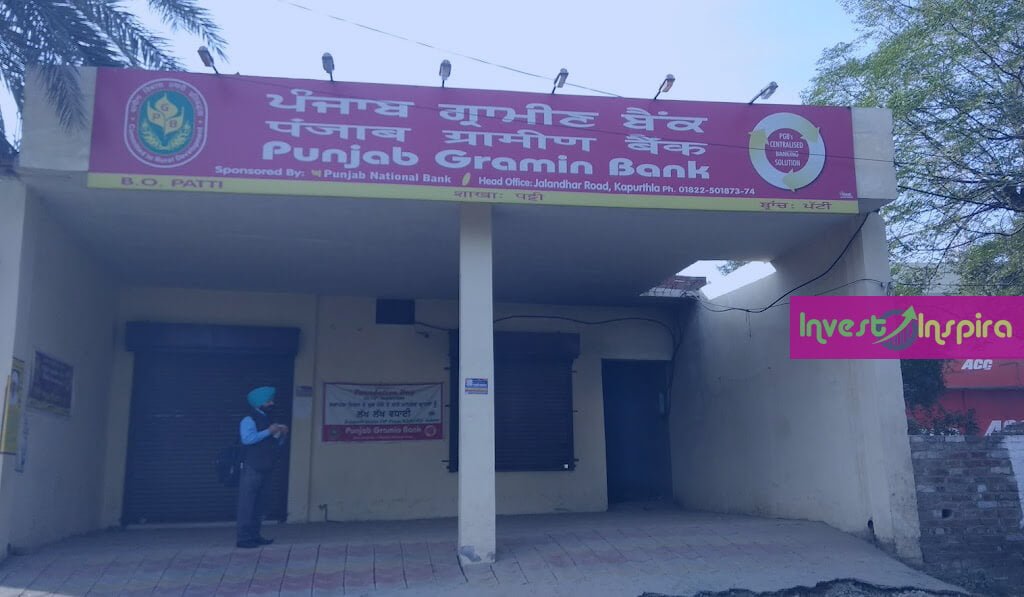Bringing Banking Services to Rural India: The PG Bank Kiosk Banking Initiative
In an effort to make banking services more accessible to people living in rural areas of India, Punjab Gramin Bank (PG Bank) has come up with a new and exciting idea called Kiosk Banking. This creative approach aims to bridge the gap between traditional banking and modern technology, making sure that even those in the most remote parts of the country can have access to important financial services.
Understanding the Challenges in Rural Areas
In many rural places, there are challenges when it comes to using banking services. There might be very few bank branches around, long distances to travel, and a lack of knowledge about how formal banking works. Recognizing these problems, PG Bank has taken proactive steps to solve them and make sure that people in rural communities can easily use banking services.
Also Read : Bank Teller Jobs near Me: Unlock Your Dream Career Today!
Exploring Kiosk Banking
Kiosk Banking involves setting up small kiosks or special points in villages and places where there aren’t regular bank branches. These kiosks are like mini-bank branches and are equipped with technology that allows different types of banking transactions.
Services Available
PG Bank’s Kiosk Banking offers a variety of services that are made for the needs of people in rural areas:
Opening Accounts: People can easily open savings accounts and other kinds of accounts at these kiosks.
Deposits and Withdrawals: Customers can put money into and take money out of their accounts without needing to travel far.
Money Transfers: People can move money between accounts within the same bank or to accounts in other banks.
Checking Balances: Customers can quickly check how much money is in their accounts and get printed receipts as proof.
Applying for Loans and Repaying: Kiosks provide a simple way for people to ask for loans and pay them back.
Government Scheme Payments: Various government subsidies and payments can be given out through these kiosks.
Also Read :
Benefits of Kiosk Banking
Financial Inclusion: Kiosk Banking helps people in rural areas by giving them access to formal financial services.
Convenience: The kiosks mean that people don’t have to travel a long way to get to a regular bank.
Cost-Effective: Setting up kiosks is cheaper than making whole bank branches.
Using Technology: Kiosks use technology to make banking easy and smooth.
Learning About Finance: People in rural areas can learn about money matters through these kiosks.
Impact on Economy: Having better access to banking can help local economies grow.
Challenges and the Future
Even though Kiosk Banking has shown great promise, there are still challenges like problems with internet connections, making sure people know how to use the technology, and keeping things safe and secure. It’s important to keep a close eye on these kiosks and provide support to make sure they work well.
As technology keeps getting better and more people get connected, Kiosk Banking is going to become even more important in changing how banking happens in rural areas. PG Bank’s idea can serve as a model for other banks that want to improve financial access and help rural communities using creative banking solutions.
FAQ’s
Q1: What is Punjab Gramin Bank’s Kiosk Banking initiative? A1: Punjab Gramin Bank’s Kiosk Banking initiative involves setting up small kiosks or points in rural areas to provide banking services to people who have limited access to traditional bank branches.
Q2: What challenges does Kiosk Banking aim to address? A2: Kiosk Banking addresses challenges such as limited availability of bank branches in rural areas, long travel distances, and lack of knowledge about formal banking procedures.
Q3: What services are offered through PG Bank’s Kiosk Banking? A3: Kiosk Banking offers various services, including opening accounts, deposits and withdrawals, money transfers, checking balances, applying for loans, repaying loans, and facilitating government scheme payments.
Q4: How does Kiosk Banking promote financial inclusion? A4: Kiosk Banking promotes financial inclusion by providing people in rural areas access to formal financial services, allowing them to become a part of the banking system.
Q5: What are the benefits of Kiosk Banking? A5: The benefits of Kiosk Banking include convenience for customers, cost-effectiveness in setting up compared to full bank branches, utilization of technology for smooth transactions, financial literacy promotion, and potential positive impact on local economies.
Q6: What challenges might arise in implementing Kiosk Banking? A6: Challenges could include issues with internet connectivity, ensuring proper usage of technology by customers, and maintaining security measures to safeguard transactions and data.
Q7: How can Kiosk Banking help rural economies? A7: By providing better access to banking services, Kiosk Banking can contribute to the growth of local economies through increased financial transactions and opportunities for financial growth.
Q8: What role does technology play in Kiosk Banking? A8: Technology plays a crucial role in Kiosk Banking by enabling various banking transactions, making them easy, efficient, and accessible to people in rural areas.
Q9: How might Kiosk Banking evolve in the future? A9: As technology advances and connectivity improves, Kiosk Banking is likely to become more sophisticated and expand its services, further transforming banking in rural areas.
Q10: What can other banks learn from Punjab Gramin Bank’s Kiosk Banking initiative? A10: Other banks can learn the importance of creative and accessible banking solutions to improve financial access and services for rural communities. Punjab Gramin Bank’s initiative can serve as a model for similar efforts.

